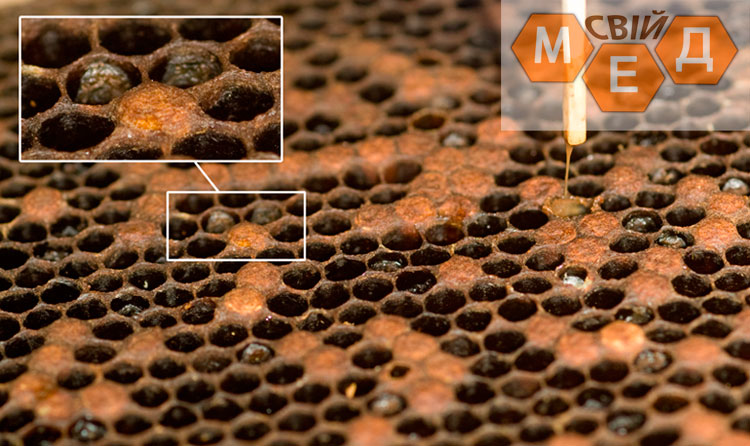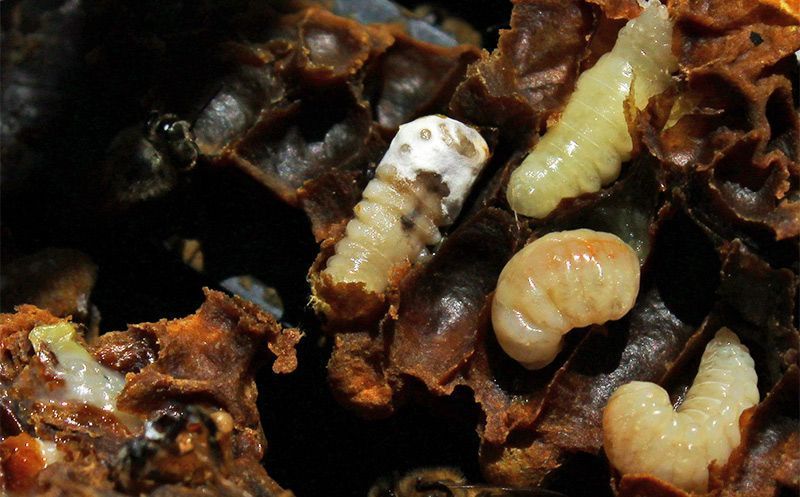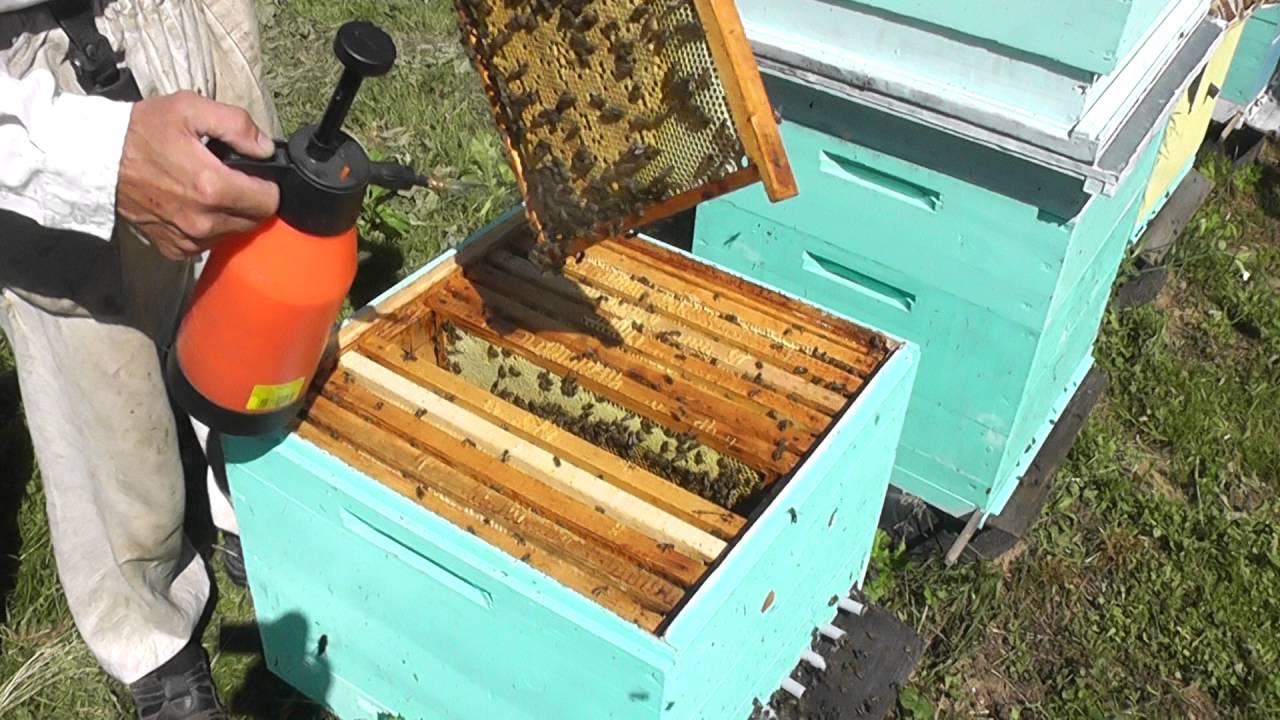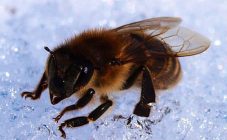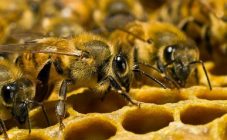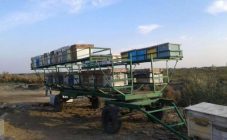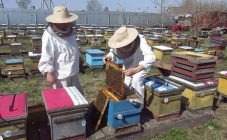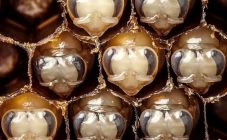Content:
Diseases of bees are a frequent problem for beekeepers, causing colossal problems. If the disease is not recognized in a timely manner and treatment is not started, then all the bees in the hive may die.
Diseases of bees: their signs and treatment
Pollen toxicosis
It occurs as a result of pollen poisoning by an insect. The main symptoms: individuals become restless, the belly thickens slightly, convulsions appear, death does not occur within the walls of the hive. Treatment in this case consists in the timely and abundant supply of water to the bees and feeding the family with liquid sugar syrup.
Nectar toxicosis
It develops when nectar is taken from poisonous plants (presence of alkaloids, essential oils). Dangerous for bees: broom, tobacco, wild rosemary, saffron, cornflower, tulip and wolf berries. Signs:
- insects crawl, then die near the hive;
- at first, the individuals are very excited, then they lose strength;
- the whole body and limbs barely move;
- cannot fly.
Treatment consists in completely getting rid of poisoned honey, feeding with sugar syrup and disposing of nearby plants poisonous to bees.
Chemical toxicosis
Poisoning with chemical poisons used to combat harmful insects (insecticides, herbicides, fungicides). There is only one symptom - the bees stop eating, then they die of exhaustion, depending on the severity of the poisoning, the bee may die on the spot. It is impossible to cure the bee in this case.
Alimentary dystrophy (fasting)
This is a violation of the metabolic process resulting from a lack of feed or a lack of nutrients in it. There are no special symptoms in this disease, insects and their brood die. Preventive measures include providing the bees with food and maintaining hygiene.
Steaming bees
It occurs when insects are exposed to high temperatures, high humidity (poor ventilation in the hive, transportation of bees in polyethylene, a heat chamber). Symptoms: excessive excitement of bees, wax softens, honeycombs break off, insects become wet, gradually turn black and die. Treatment: individuals should be released, dead bees and damaged honeycombs are disposed of.
Honeydew toxicosis
The result of feeding on honeydew honey, carrion. Problems of the digestive system, intestines lead to the gradual death of the individual. There are no signs as such.
There are no special ways to treat bees, insects definitely die.
Infectious diseases of bees
Infectious diseases of bees are transmitted from infected queens, beekeeping tools, boxes.
Bee acarapidosis: symptoms and treatment
Acarapidosis of bees is a tick-borne infection of individuals by the parasite Acarapis Woodi.
The main symptoms
- When opened in spring, the beekeeper reveals a large number of dead insects and traces of their diarrhea;
- Affected bees are unable to fly, fall to the ground, crawl, gather in heaps and buzz intensely;
- Opening - there is a spreading and turning of the wings in different directions.
Treatment
Acarapidosis is treated with fumigation or with a couple of acaricidal drugs placed in the hive.Dead bees are thoroughly cleaned out and burned. The most effective remedies:
- ü Muravyinka - a preparation based on formic acid;
- ü fir oil;
- ü Folbeks (Ethersulfonate);
- ü Akarasan;
- ü Polisan;
- ü Varroades;
- ü TEDA;
- ü BEF;
- ü Turpentine.
The use of folk remedies is also no less effective, fir oil has proven itself well.
Aspergillosis and its characteristic features
Aspergillosis of bees, or simply called stone brood in beekeeping, is an infectious fungal disease caused by the fungus Aspergillus flavus, which is dangerous for all representatives of the bee family, domestic animals and humans. Directly at the brood, it causes shrinkage, death - of an adult bee. The incubation period is 2-3 days.
Typical signs of bee aspergillosis:
- in adults, excitement, increased activity, the acquisition of a black tint (depending on the pathogen) are observed, flight becomes weak and heavy;
- the larvae begin to wrinkle, become creamy white, their segmentation disappears, and they harden.
Stone Brood Treatment
How to cure stone brood in bees? It is impossible to cure infected brood and adults. Bee colonies showing clinical signs characteristic of aspergillosis are to be exterminated, the hives are disinfected. Honeycombs with healthy brood are moved to a clean hive, and the bees are fed with high-quality food.
Failure to comply with safety measures is fraught with infection, and it is rather difficult and long to be treated for aspergillosis.
Why bees crawl and don't fly
Beekeepers often ask themselves why bees crawl on the ground and cannot take off, since this symptom is typical for many diseases.
The main reasons why bees crawl on the ground in summer and cannot take off:
- acarapidosis;
- acute paralysis;
- filamentvirosis;
- nectar toxicosis;
- acarapidosis.
It is possible to determine exactly which disease struck the bees only with a thorough examination and in the presence of accompanying symptoms.
Prevention of pesticide poisoning
Instructions for the prevention of pesticide poisoning by bees:
- Agrotechnical actions to protect bees from the ingress of toxic substances, pesticides into their bodies should be aimed at creating an additional forage base for beekeeping: honey crops should be sown in the vicinity of the apiary areas so that they bloom just at the time when they will spend treatment with pesticides, thereby creating a resource of honey collection;
- The beekeeper, having received a notification about the upcoming procedure, must take the apiary to a safe place within a few days (at least 5-7 km from the place) or hide the bees in the winter house, isolate their departure;
- According to the degree of danger of the poison, the required protective measures are taken for the bees: either the removal of the apiary, or the isolation of the families. Treatment with poison of class 1 (highly hazardous), border protection zone - 5 km, assumes a limitation of summer to 6 days. Class 2 (medium hazard), border protection zone - 4 km, summer restriction - up to 3 days, Class 3 (low hazard), border protection zone - 3 km, summer restriction - from 3 hours to 1 day.
- 24 hours before the start of processing, insulation is removed from the nests, ceiling boards and laps are taken out, the nests are expanded using empty honeycomb frames, the nest is closed on top with a nomadic net, on which a canvas is placed on top and covered with a roof. The holes are completely closed, the webs are removed from the ventilation grids in the last hours before the procedure.
- After the expiration of the isolation period, the entrances of 1-2 hives are opened to observe the actions of the bees for some time. If no deviations in their actions are found, the remaining hives are opened.
Preventive measures and elimination of diseases
Requirements for the placement and arrangement of apiaries:
- The apiaries are located in sunny, wind-protected areas, no closer than 0.5 km from railways, highways, sawmills and high-voltage lines, no closer than 5 km from pastry shops, airfields, sources of microwave radiation.
- The stationary apiary is surrounded by a hedge. The hives are placed on stands at least 0.3 m high from the ground, the distance between them is 3-3.5 m, and between the rows is 10 m.
- It is necessary to have a room for storing honeycombs with honey, beekeeping tools, disinfectants.
- In the winter house, the temperature should be 0.5-4 degrees, humidity - 75-85%;
- It is obligatory to have a veterinary and sanitary passport for the apiary.
Requirements for keeping, feeding and breeding bees:
- Bee colonies are taken out of the winter house at temperatures above 12 degrees.
- In the spring, the entrances are cleaned from dead weather, debris, and disinfected. The bees are examined, the presence of food is assessed, and if it is lacking, they are fed (honey, sugar syrup).
- Unsuitable combs are discarded every year.
- Drinking bowls are filled with slightly salted water (0.01% mixture).
Measures to protect apiaries from diseases:
- Apiaries are completed only with healthy bees.
- Queens, packs of bees from foreign suppliers are accepted in accordance with certain veterinary requirements.
- Transfer of any beekeeping equipment from one apiary to another - only after disinfection.
- The presence of unauthorized persons in the territory of the apiary is prohibited.
- A stationary apiary must necessarily include an equipped honeycomb storage (dry, relative humidity - 50%, frost-proof, inaccessible to rodents, insects), in which empty honeycomb frames, honeycombs with honey, foundation are kept.
- Families are examined and treated by a veterinarian.
- In the presence of especially dangerous diseases, it is necessary to inform the chief veterinarian of the city, who will decide the further fate of the apiary (quarantine, disposal, treatment).
Antoine de Saint-Exupéry's dictum is appropriate: "We are responsible for those we have tamed." Indeed, the apiary is a kind of beekeeper's "cub", her future depends only on him. It is impossible to protect yourself from all diseases, but it is not difficult to significantly reduce the risk of their occurrence.
